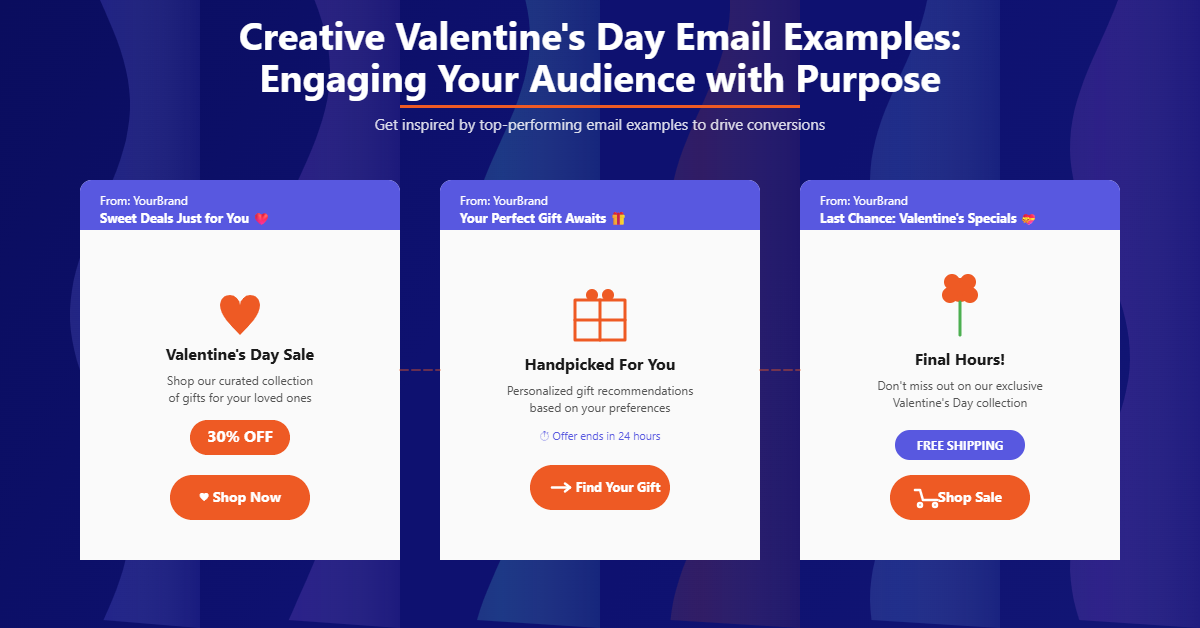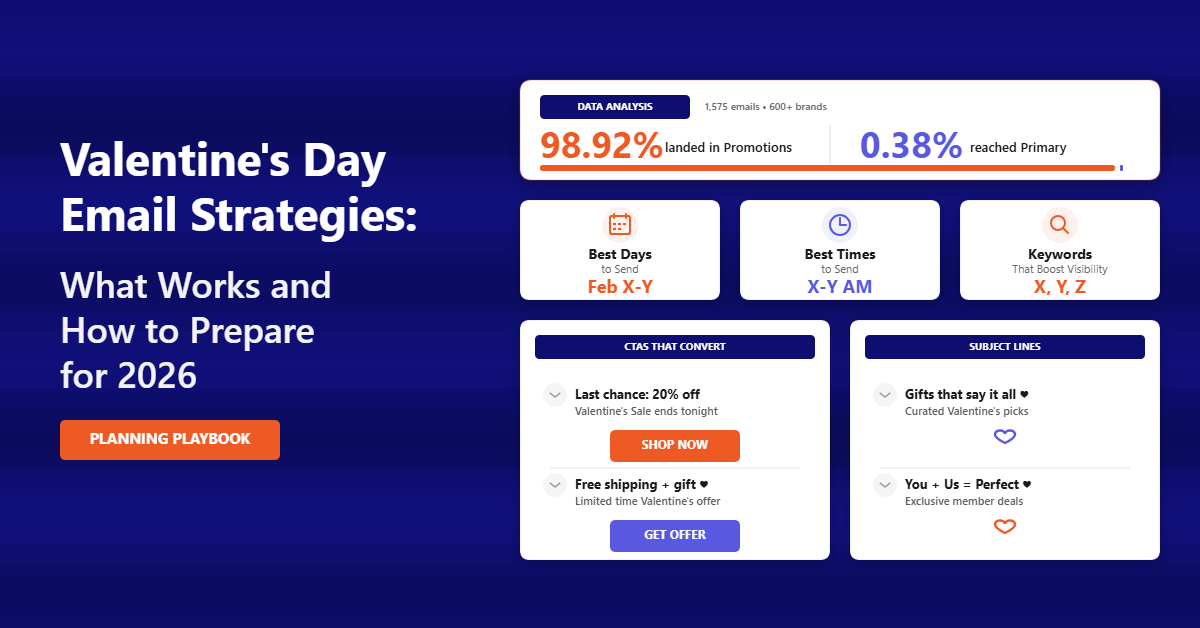Although we’re familiar with the importance of email marketing. A short crips to you, it is nothing but offers a direct line of communication that brands can use to their advantage to engage customers, drive sales, and foster brand loyalty.
Like every other channel, email marketing and its importance wax and wane as the world evolves around it. With frequently changing consumer behaviors and technological advancements, you must become a pro version of email marketing.
From the recent study by Litmus, email marketing ROI is an impressive $36 for every $1 spent, highlighting the continued importance of this method. Furthermore, Statista projects that there will be 4.6 billion global email users by 2025, so email is going to remain a vital channel for eCommerce businesses.
However, technological advancement and consumer behavior evolve, so eCommerce email marketing is undergoing significant change. And you have to swirl with eCommerce email marketing trends and innovation to rule the throne.
Here, we outline some changes you need to be aware of to stay ahead. But keep that 36 to 1 ratio a reality.
eCommerce email marketing trends & innovations to watch
1. Go with personalization and segmentation
Personalization remains a critical dimension of effective eCommerce email marketing. Tailoring content to individual purchase history and buying behaviors is the best way an eCommerce business can do to foster stronger customer connections and communication.

With the advancements in data analytics, such as machine learning algorithms and predictive modeling, are enabling more precise customer segmentation. This is where data analysis help comes in for marketers. Where different campaigns can be created for different audience subsets, adapting the same common message to the ways different people hear it.
For instance, the big eCommerce giants like Amazon and Sephora who is known for achieving significant growth through developing effective personalization strategies.
Not a blindfold mark, Amazon’s personalized product recommendations account for 35% of its revenue, while Sephora’s personalized email campaigns have led to a 27% increase in email revenue. Incredible, isn’t it?
Yes! The impact of personalization on customer engagement and loyalty cannot be overstated. It has been calculated that 80% of consumers are more likely to purchase from a brand that offers personalized experiences (Source: Epsilon, “The power of me: The impact of personalization on marketing performance,” 2018,),
2. Use interactive email content
As we’re settling down in the competitive market, every day is going to be an uphill battle for eCommerce marketers and business owners. The rise of personalization has moved to hyper-personalization, which adds-in email design, visuals you add along with the email font, and copy have become a vital role.

In that way, interactive content elements in eCommerce email marketing are transforming the way eCommerce businesses approach customers. Content such as quizzes, polls, and games encourages direct interaction with an email and can significantly boost engagement rates.
For example, British fashion retailer Topshop incorporated a ‘Spin to Win’ game in an email campaign, which generated a 250% increase in click-through rates. And furniture retailer Made.com then included an interactive quiz in an email campaign designed to help customers find their ideal sofa style, generating a 40% increase in click-through rates. It is just wow!
With the above examples, it is proven that using interactive email content has increased customer engagement, improved data collection, and enhanced conversion rates. Why don’t you use it for your brand in your next email campaign?
Remember: The basic principles for incorporating interactive elements are simple common sense: keep the content relevant to the brand, ensure mobile compatibility, and provide clear calls-to-action.
3. Now, with artificial intelligence (AI) and machine learning (ML)
When AI and ML are revolutionizing email marketing automation, then eCommerce businesses will need to use them to optimize their campaigns before others do. Neither is a substitute for human creativity and decision-making, but they do a lot of the hard research humans used to do and thus empower marketers to play to their strengths.
On the other hand, predictive analytics can use customer data to determine the best times to send emails, the most effective subject lines, and the content most likely to drive conversions. Even AI-powered tools can also generate personalized email content at scale, ensuring each customer receives relevant and engaging messages.
Some brands have already incorporated it and seen their result, so why not you? Let me tell you real-world examples of AI and ML being applied successfully in email marketing.
With Sephora’s use of predictive analytics to determine which customers are most likely to make a purchase which resulted in a 15% increase in email revenue. And fashion retailer Stitch Fix also uses AI algorithms to generate personalized style recommendations in its email campaigns and is expanding this further due to visible enhancements in customer satisfaction and retention.
4. Mobile Optimization
Optimizing eCommerce email marketing content for mobile devices has become crucial because over 50% of emails are now being opened on mobile. With the use of responsive interactive email templates that adapt to different screen sizes is essential for ensuring a seamless user experience.
In that way, you can do things manually instead of opt for tools like BayEngage to do it. Which offers pre-designed, mobile-friendly email templates that can be easily customized to fit a brand’s aesthetic. The designs are also regularly updated to be effective, timely, and fresh, retaining the most effective elements of previous designs whilst revitalizing overly familiar presentational formats.
Some best practices for mobile email optimization include using a single-column layout, keeping subject lines concise, and placing important information and calls-to-action above the fold. You also need to use larger email fonts than in regular emails, as the mind plays tricks with the eyes when the viewing area is smaller.Skincare brand Glossier has mastered mobile-friendly email design, presenting clean, easy-to-read layouts and prominent calls-to-action. This has generated higher click-through rates and conversions and made it a marquee brand for younger consumers, who engage more with their phones and social media than traditional stores.
5. Make use of user-generated content (UGC) in email marketing
UGC is the predominant asset in every industry. Incorporating it effectively in all your email campaigns is a powerful way to build trust and credibility with customers. UGC includes user reviews, photos, and testimonials that provide social proof and can significantly influence purchasing decisions.
Again, doing it manually is a time-consuming process. However, with tools like BayReviews, it is an easy-peasy process to collect and display customer reviews. Which can be seamlessly integrated into email campaigns by presenting them as the inevitable consequence of acting upon what the recipient has just read.

Well, nothing comes free in this world. Every effort needs motivation and encouragement. Customers can be encouraged to create and share UGC through incentives such as discount codes, free shipping, free products, and social media contests, making it easier to create ugc ads. However, simply seeing your own name in something published by your favorite brand can be an incentive enough.
For instance, clothing retailer Aerie regularly features customer photos in its email campaigns, fostering a sense of community and authenticity that resonates with its target audience. Who doesn’t want to be a fashion model for a day?
6. Privacy and consent management
As now-ubiquitous data privacy regulations such as GDPR and CCPA continue to evolve, eCommerce businesses increasingly need to be seen as prioritizing privacy and consent management in their email marketing and 10X steps more in SMS marketing. Yes, obtaining explicit consent from customers before sending marketing emails and SMS is mandatory, and how they can opt out of these should be clearly stated and accessible.
Abide with the rule, the best practices for developing privacy-focused email marketing include using double opt-in forms, providing transparent information about data collection and usage, and regularly updating consent preferences. The language used in these notifications should be regularly refreshed to actively engage readers who might ignore them when they have seen so many before.
By prioritizing customer privacy, eCommerce businesses can build trust and foster long-term relationships with their audience. At the end of the day, people want ethical brands.
7. Omnichannel integration
It has often been remarked that the more diverse communication channels become, the more they try and come together. Email marketing won’t remain a prominent sales driver unless it integrates seamlessly with social media, SMS, mobile apps, and whatever is around the corner.
An omnichannel approach ensures that potential customers have a consistent brand experience across touchpoints and also see more targeted and effective communication. BayEngage is one example of a tool that enables eCommerce businesses to create and manage omnichannel campaigns from a single platform, and with over 4,000 brands using its offerings, everyone needs to keep an eye on how it is developing.
Successful omnichannel email marketing campaigns even have their own challenges. However, some brands like Sephora, a beauty retailer, have implemented and used data from multiple channels to create personalized experiences. By integrating email with their mobile app and in-store interactions, Sephora has become famous in its industry for delivering targeted product recommendations and exclusive offers that drive customer engagement and loyalty.
Conclusion
As eCommerce email marketing is taking on new forms shaped by personalization, interactivity, AI-driven optimization, mobile-friendliness, user-generated content, privacy-focused practices, and omnichannel integration. Now, you have to embrace these trends and innovations; ecommerce businesses can continue using email to drive results by delivering campaigns that resonate most effectively with their audiences and foster long-term customer relationships.
Email marketing will remain a vital tool for engaging customers and driving growth for the foreseeable future, but yesterday’s success may have little to do with tomorrow’s world. By utilizing emerging trends and technologies and prioritizing customer preferences and privacy, eCommerce businesses can continue to unlock the full potential of email marketing in the years to come.




